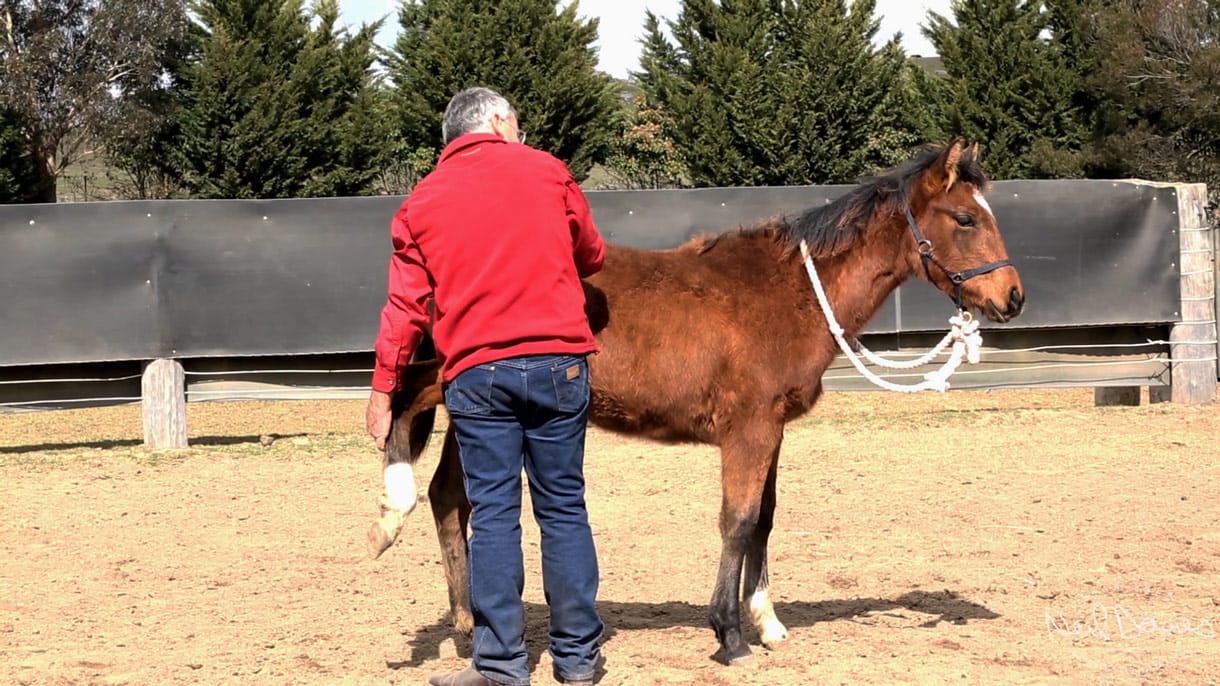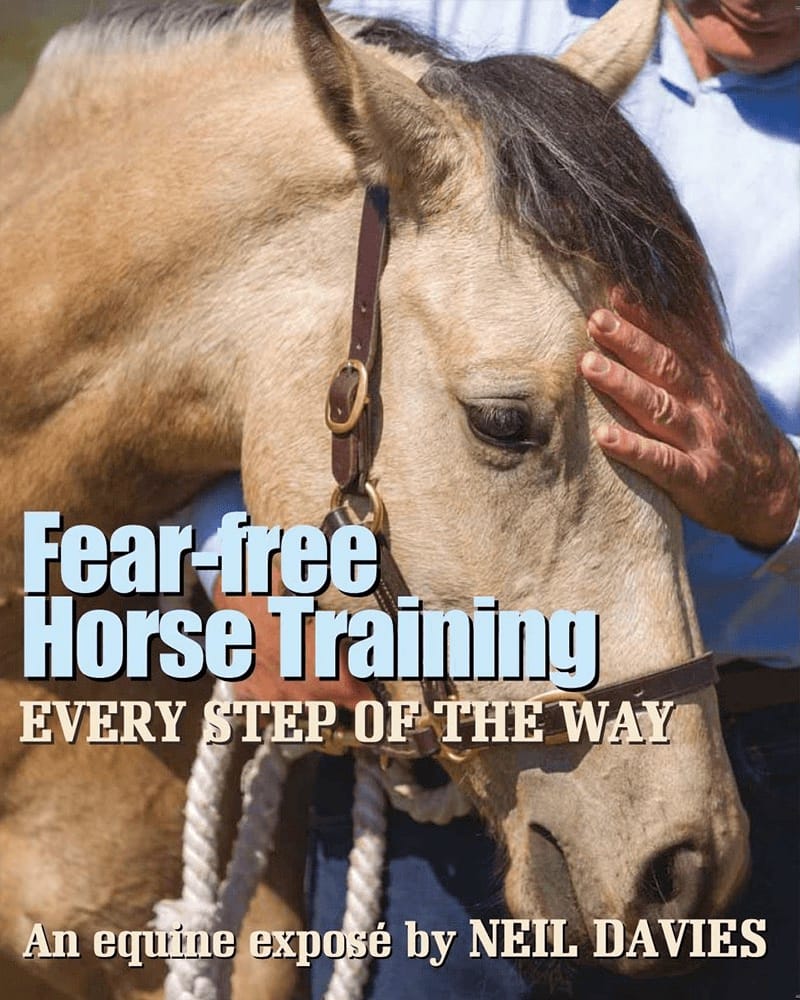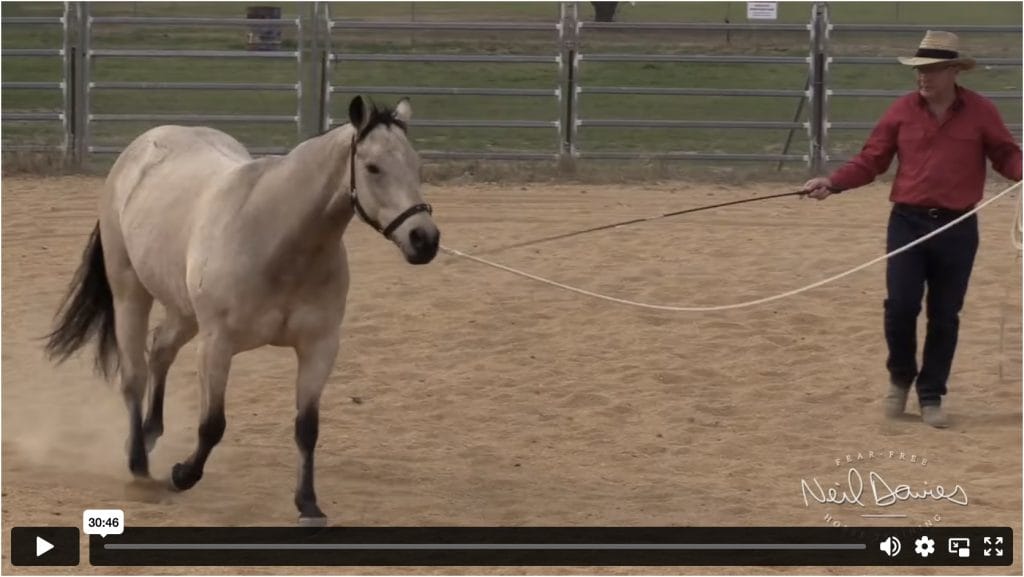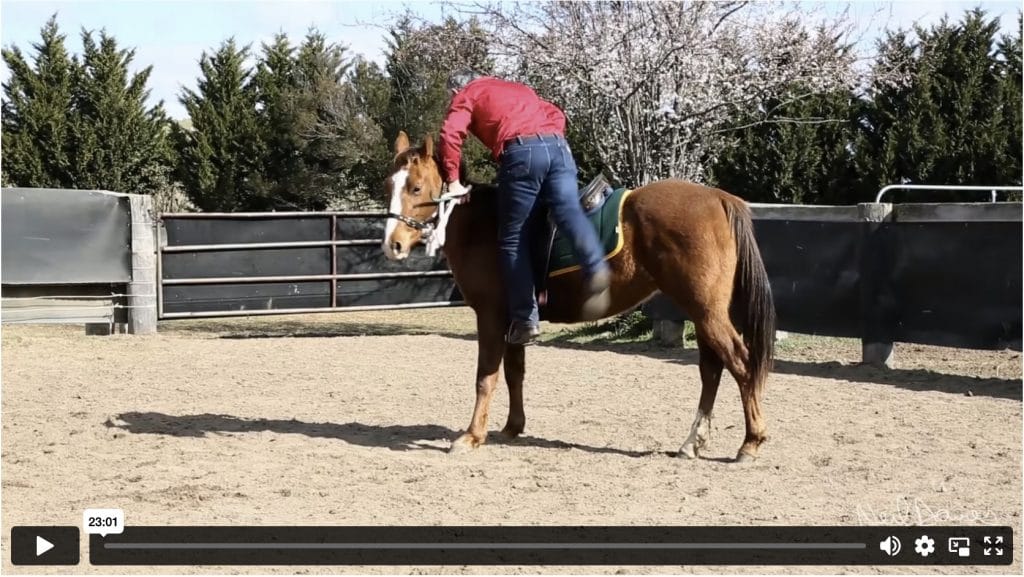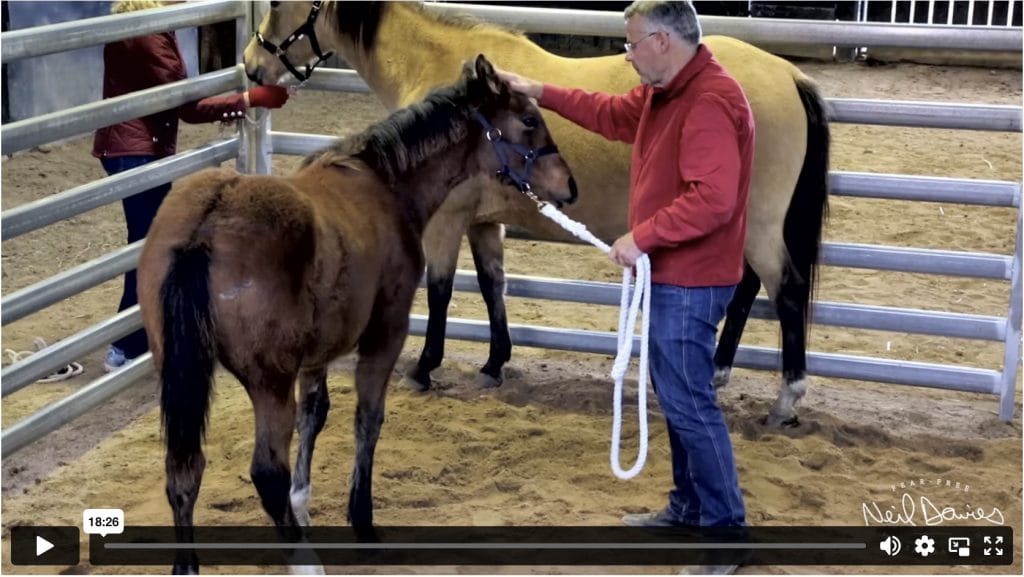If you watch a week-old foal playing in the paddock, you’ll see that he already knows how to walk, trot, canter, do flying changes, turns, spins, levade, piaffe, passage, extended trot/canter/gallop and every other movement you ever dreamed of.
When we ride, the problem we have is to convince our horses to perform these movements exactly where and when we want.
But you can’t expect any horse to perform advanced movements or even simple movements, if he doesn’t understand what you want him to do.
When a rider sits on a young horse’s back for the first time, the horse has no idea that he’s expected to move forward and carry the rider.
Even when the rider kicks or hits or chases him, the horse still doesn’t understand that the rider wants him to move forward.
Although every horse knows how to walk trot and canter, a young horse on his first ride doesn’t automatically understand what the rider wants him to do.
The problem is exactly the same when it comes to teaching an older horse advanced movements such as flying changes, spins, turns or canter pirouettes.
No matter how well-bred or how talented he is, every horse must be taught one step at a time.
We must find a step-by-step approach that ultimately leads to whatever movement we want to perform.
It may take months and even years before your horse understands to perform advanced movements exactly when and how you ask.
The only way we can communicate with our horses is by applying pressure through our legs, seat, weight and hands.
When a horse understands that the way to relieve this pressure is to perform as you ask, he’ll readily comply.
No horse will put himself through a fight or a drama if he understands how to relieve pressure.
When a horse doesn’t understand how to relieve pressure, he’ll resist and fight because he sees no other way.
Trainers often ride along pulling and holding a horse’s head around to one side or the other;
‘I’m loosening his neck muscles so he can bend’ they say.
Others force the horse’s head down with severe bits and all sorts of contraptions and say;
‘I’m softening his neck and poll.’
If you watch a horse grazing on good pasture, you’ll see that he has no problem at all keeping his head down for hours at a time.
When a bot fly lands on a horse’s flank, you’ll see that the horse can bend his neck around to his tail in order to chase that fly away.
And if the fly lands on his opposite flank, the horse has no problem bending around to that side either.
The truth is, your horse can flex, bend, perform flying changes, spins, turns, extended trots and everything else that you desire.
Problems arise only when you try to make your horse perform these movements with you on his back.
Next time you have a problem, you must remember that your horse can perform all sorts of complicated movements.
The only reason that your horse feels stiff and hard is because he doesn’t understand what you want and he’s fighting against you.
When your horse understands and tries for you, he always feels soft and supple.
Trainers often say that you must build a horse’s muscles for years before he can perform advanced movements.
Funny thing is, a foal can perform these movements in his first few days of life, without any muscle build-up at all.
Always remember, it’s your horse’s mind that you’re working on, not his muscles.

